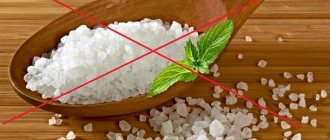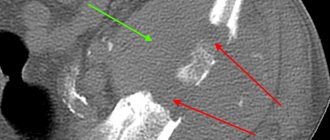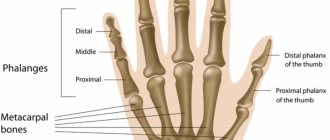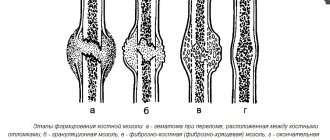Bones create a strong frame that helps to move in space and protects a person’s internal organs from any external damage.
Unfortunately, even such a strong system can fail. Throughout life, the chemical composition and strength of bone tissue are prone to change. These parameters are influenced by a large number of factors: from aging and the number of fractures to nutritional deficiencies in the body.
Due to an incorrect diet and lifestyle, multiple disorders of the musculoskeletal system can occur, which can significantly limit a person’s daily activity.
Having studied the research available today, we can identify a list of 7 useful foods, the consumption of which will strengthen bones, reduce the risk of developing osteoporosis and maintain the health of the entire musculoskeletal system.
Pumpkin seeds
All plant seeds contain enormous amounts of calcium and magnesium (and as you know, up to 50% of this mineral is located in the bone depot).
The most useful are pumpkin seeds.
One scientific study confirmed that pumpkin seeds help increase the number of osteoblasts and reduce the crowding of osteoclasts in bone tissue, which provides reliable prevention of osteoporosis and restores skeletal strength.
They should definitely be consumed by pregnant and lactating women to prevent osteoporosis (decreased bone density), as well as by children for active bone growth and teething.
The daily requirement of magnesium is about 400-420 mg for men and about 300-320 mg for women. Children under 14 years of age need 80 to 240 mg of magnesium. At the same time, 100 g of pumpkin seeds contain almost 600 mg of macronutrients, which completely covers the body’s daily requirement.
It is recommended to consume pumpkin seeds (and other plants) more often to maintain bone integrity, as they contain calcium and magnesium.
Nuts
Nuts are a universal source of magnesium, alpha-linoleic acid and omega-3 fatty acids, which not only reduce the rate of physiological destruction of bone tissue, but also contribute to the rapid restoration of damage and bone fusion (fractures, dystrophic diseases).
Numerous studies have shown the high effectiveness of nuts. For example, Canadian scientists have concluded that “healthy” eating behavior with the obligatory inclusion of nuts in the diet helps improve the mineral composition of bone tissue and significantly reduces the risk of osteoporosis and fractures.
Australian scientists came to a similar result. According to them, consumption of plant foods (with the addition of vegetables, legumes, fruits and nuts) increases the strength of bone tissue and prevents the occurrence of dystrophic and degenerative diseases of the striated muscles.
Thus, nuts normalize metabolic processes in the bones and are a means of preventing a wide range of pathologies of the musculoskeletal system.
Leafy greens
All green leafy plants are rich in valuable proteins and microelements. They are especially valued for the presence of magnesium, calcium and vitamin K. At the same time, the most useful are cilantro, lettuce and green onions (feather).
About 30-80 g of the described products provide the daily requirement for vitamin K. This vitamin increases the rate of bone regeneration by activating osteocalcitonin.
It has been proven that a deficiency of vitamin K in the blood increases the risk of hip fracture by almost 30%. Similar results were obtained by Japanese scientists, but the risk level was slightly lower – 21%.
It is recommended to add greens to regular dishes without fail in order to meet the physiological needs of the body for vitamin K, as well as magnesium and calcium.
Fatty fish
Fatty fish are rich in vitamin D. Most of it is found in tuna, mackerel, salmon, sardines, and mackerel.
Vitamin D plays a major role in maintaining bone integrity and also helps in calcium absorption. With vitamin D deficiency, a gradual decrease in bone tissue strength is observed, and the risk of fractures increases.
The daily value of vitamin D, according to the US Department of Health, for an adult is about 600 IU; older people should raise the bar to 800 IU. Surprisingly, only 150-180 g of “average” fish provides this physiological need.
Fish also contains valuable omega-3 fatty acids and vitamin A, which are regulators of ion exchange in bone tissue.
In addition, oily fish is one of the 11 foods that are most beneficial for joints and cartilage.
You should definitely include seafood in your diet due to its high vitamin D content. If this option for obtaining vitamin D is not possible, you need to take specialized food supplements.
The healthiest food for bones
The most beneficial food for the skeletal system will be food that contains the daily requirement of calcium, phosphorus and vitamin D.
The following foods are rich in calcium:
- whole milk and dairy products (kefir, cheese, yogurt, cottage cheese, ayran);
- green and leafy vegetables (lettuce, cabbage, spinach, basil);
- fish and canned fish, eaten with bones;
- chicken eggs;
- nuts and soy.
The daily calcium requirement of an adult is in the range of 800-1000 mg.
Phosphorus promotes calcium absorption, so nutrition for healthy joints and bones will include foods rich in this mineral:
- fish and seafood;
- wheat bran;
- egg yolk;
- baked pumpkin;
- boletus mushrooms;
- legumes
The daily phosphorus intake for adults ranges from 700-1600 mg.
And in order for both microelements to be absorbed from food as efficiently as possible, we need vitamin D, which is synthesized in sunlight. During the cold season, the following foods that strengthen bones will help replenish calciferol deficiency:
- fish fat;
- fatty fish (mackerel, sardine, salmon, herring);
- chicken yolk and egg powder;
- fat sour cream and cream;
- mushrooms - chanterelles, champignons and morels.
The recommended daily intake of vitamin D for an adult is 600 mcg.
Cheese
Hard cheeses (Gouda, Cheddar, Parmesan), which contain 10-14 times more calcium than regular milk, have a wide range of beneficial properties.
Experts from the University of Granada claim that calcium normalizes metabolic processes in bone tissue, prevents resorption, and also improves the functioning of the entire musculoskeletal system. The amount of calcium in the diet is inversely proportional to the incidence of osteoporosis, cancer and cardiological diseases.
The World Health Organization recommends that an adult consume at least 6,500 g of cheese and products using it per year.
Cheese is a powerful source of calcium, which is essential for maintaining the anatomical and functional integrity of bones.
FIVE NUT FACTS
- Nuts are rich in phytoestrogens - plant analogues of female sex hormones. This helps nut lovers stay young, both men and women. Nut lovers protect their blood vessels from the development of atherosclerosis, immune system cells from destruction, articular cartilage from depletion, and improve the condition of the skin, hair, cornea and eye lenses.
- Nuts supply the human body with fiber, B vitamins, and tocopherols, which are very important for establishing metabolic processes. True, it makes sense to look for vitamin E only in raw nuts - it is destroyed during heat treatment.
- The body is not able to digest more than 100 grams of nuts at a time. True, for vegetarians, nuts are a source of protein, similar in its amino acid composition to animal protein. They need to eat them more often, but again in small portions.
- Thanks to the large amount of mineral salts in the composition, plant seeds ensure uninterrupted functioning of the heart, immune system, and support the activity of the thyroid, thymus and gonads. Thanks to the content of protease inhibitors, nuts can even slow down the growth of tumors.
- The energy value of most nuts is very high: 100 grams of nuts contain more than 550 kcal.
Now let’s talk in more detail about the brightest representatives of the nut series. Find your favorite nut and see what benefits it has on your body.
Benefits of almonds
Champion among nuts in causing allergies. But if you are not allergic to it, it is difficult to come up with a better snack. It contains fiber, protein, calcium, zinc, magnesium, potassium, phosphorus, copper, iron and some B vitamins. By the way, almond kernels, ground into powder, filled with water, can replace milk for those who, for some reason, cannot consume dairy products. This “milk” is high in calcium and vitamin E. Industrial nut milk may contain artificial additives, which automatically makes it a possible source of health problems. So it is recommended to prepare this milk at home yourself.
Useful properties of hazelnuts
Very nutritious - about 700 kcal. Helps maintain cardiovascular health, improves brain function, lowers blood sugar, helps prevent cancer and fight obesity. Useful for maintaining beautiful skin and hair. Moreover, it is the second most allergenic after almonds. It should be used with caution during pregnancy and breastfeeding, as well as during frequent headaches.
Benefits of walnuts
Contains a lot of boron, necessary to maintain the brain, bones and cartilage in working condition. Thanks to beta-sitosterol, it reduces the risk of developing atherosclerosis, especially of the coronary and cerebral arteries. Regular consumption of walnuts (but no more than seven per day) helps reduce blood glucose levels, blood pressure, helps you lose excess weight, and reduces the risk of prostate and breast cancer. Caution: strong allergen!
Benefits of cashews
Strengthens the heart and blood vessels, improves the condition of hair and skin, nourishes the cornea of the eyes, and reduces cholesterol levels. Recommended for type 2 diabetes. Has a beneficial effect on brain development.
Benefits of pecans
Recommended for frequent spasms and cramps. Pecans also contain rare vitamin B3, which, when combined with sterol, protects against the formation of plaques on blood vessels and helps fight fatigue.
Useful properties of pistachios
They have a general strengthening and stimulating effect. Due to the increased content of vitamin B6, they are recommended for women during menopause and help normalize hormonal levels.
Benefits of pine nuts
Strengthen arteries and improve heart function. They give energy while suppressing appetite, increase the level of hemoglobin in the blood, and improve vision. The norm is 2–3 tablespoons per day.
Benefits of coconut
Coconut water is close in composition to human blood, which is why it is recommended for restoring strength during serious physical exertion, and is indicated for duodenal and stomach ulcers, and for diseases of the liver and gall bladder. But you should drink coconut water immediately after opening the nut. Later, nutrients are lost.
Coconut pulp has a beneficial effect on the thyroid gland, reduces addiction to antibiotics, and quickly energizes you. It is also a recognized aphrodisiac. Helps to conceive a child by increasing the receptivity of eggs and increasing sperm motility.
Benefits of chestnut
An excellent source of vitamin C and folic acid. Chestnuts can be eaten frequently due to their low fat content. 100 grams of chestnuts contain only 170 kcal.
Benefits of Brazil nuts
A source of selenium, which has antioxidant properties, giving youth and freshness to the skin. Thanks to oleic and ellagic acids, it inhibits the growth of cancer cells. These nuts are useful for the prevention of liver cirrhosis, cardiovascular diseases and premature aging. Especially recommended for type 2 diabetes, arthritis, anemia and high cholesterol. They also speed up the healing of wounds, bruises and bruises.
Benefits of macadamia nut
Macadamia nuts contain an order of magnitude more vitamins and minerals than any other nut. BUT it contains up to 9% sugar, which diabetics should pay attention to. The calorie content is also the highest - 718 kcal per 100 grams. This nut is useful for any headaches, even migraines. Fights chronic fatigue, rejuvenates the body at the cellular level, treats burns, and with moderate consumption normalizes blood sugar, restores strength, and improves memory. In general, we can say that macadamia nut is a means to instantly improve your life. It is not surprising that macadamia oil is successfully used in cosmetology, because it makes the skin soft and elastic, and hair and nails healthy and strong.
Beans and soybeans
Beans contain a significant amount of protein, starch, vitamins (A, B, C, K, PP, K) and mineral components. In terms of qualitative composition, beans practically correspond to cattle meat.
Soy provides the body with natural isoflavonoids, lecithin, and phytic acids. This set of nutrients creates the prerequisites for proper bone development in young children, and also helps prevent age-related decreases in bone density in older people.
Experiments on rats show that consumption of soybeans inhibits bone resorption and prevents the development of osteoporosis during the perimenopausal period.
Adding beans and soybeans to your daily diet has a beneficial effect on the health of the musculoskeletal system.
5 more important nutrition tips
To increase the strength of bone tissue and prevent various pathologies, it is recommended to adhere to the following recommendations:
- Balance your diet. A balanced diet and the absence of energy surpluses create the prerequisites for obtaining all necessary nutrients (primarily proteins and carbohydrates), and are also effective in preventing obesity. Excessive stress on the musculoskeletal system significantly increases the risk of damage not only to joints and cartilage, but also to bones. Components such as vitamins (A, K, D, B12), magnesium, and calcium are especially important.
- Follow a fractional diet. It is recommended to take food 4-6 times a day in equal portions to create an even load on the body's metabolism.
- Fry less. Frying or prolonged heat treatment by other methods destroys many beneficial substances.
- Avoid alcohol. Numerous scientific studies and experiments show that alcohol consumption (especially long-term) reduces bone density and contributes to the occurrence of fractures. There was also a deterioration in the quality of all structural elements of teeth. In addition, alcohol is known to harm joints.
- Eat more fresh vegetables and fruits, leafy greens. These products saturate the human body with essential microelements and vitamins and have a pronounced positive effect on metabolism.
What is harmful to bones: list of prohibited foods
What foods should you avoid:
- Contains a lot of salt. Salt retains water in the body, increasing the load on bones and joints.
- Sweet carbonated drinks. They contain orthophosphoric acid E 338, which promotes the leaching of calcium and the development of osteoporosis.
- Baking with margarine. Trans fats in baked goods block the activity of vitamin K, which is necessary for the synthesis of bone tissue protein.
- Strong coffee in large quantities. Caffeine interferes with the absorption of calcium in the intestines and makes bones more fragile.
Also prohibited are alcoholic drinks that can leach calcium from tissues and inhibit the processes of bone cell division.
Recommendations for lifestyle changes
The health of bone tissue is influenced not only by nutrition, but also by the nature of everyday behavior. It is important to follow the following recommendations:
- Regular physical activity. Exercises strengthen the ligaments and striated muscles. As a result, the prerequisites are created for adequate development of bone tissue. According to scientists, strength exercises are especially effective.
- Frequent exposure to fresh air. This helps to improve the supply of oxygen to all organs and tissues and prevent microcirculatory disorders in the bones. Additionally, due to the sun's rays, you can get vitamin D. You should stay under ultraviolet light for no more than 30 minutes a day, and choose park areas as a place.
- Competent attitude towards your health. Any areas of pain or impaired mobility in the joint area, especially for a long time, should be a reason to urgently contact a specialist. Early treatment is much more likely to lead to positive results.
- To give up smoking. Regular inhalation of tobacco smoke (including passive) negatively affects not only the condition of the musculoskeletal system, but also the entire body as a whole. The metabolism of vitamin D and the absorption of vitamin C are disrupted, and the synthesis of new collagen fibers is suppressed.
Strengthening bones: what you need to know?
Calcium and vitamin D are of particular importance for the skeletal system in the body. This means that a person of any age must monitor the amount of these microelements in his own body and take care of their timely replenishment. Also, bones constantly need phosphorus, magnesium and iron, which contribute to the production and participate in the absorption of calcium.
Calcium for strengthening bone tissue
The main building block for bone tissue is calcium. It is what promotes density and rapid regeneration of bone tissue. With a low intake of calcium from food, the body has to start using calcium, which is localized in the bones themselves.
A decrease in the level of the mineral is usually provoked by long-term diets or fasting, the absence of foods containing a large supply of calcium in the daily menu, pregnancy, stress, various pathologies, digestion begins to suffer and mechanisms of changes in the endocrine system are triggered. The cause may also be a decrease in the level of vitamin D in the body. Mostly at risk for calcium deficiency are children and middle-aged people, as well as the elderly, due to the way the body works.
A lack of calcium is dangerous and can trigger irreversible negative changes in the body as a whole, therefore, when making a diagnosis, data on the amount of the mineral in the cells of the body is often used.
Vitamin D and its help in strengthening
Vitamin D is responsible for the entry of calcium and phosphorus into cells and maintains the balance of elements. The “sunshine” vitamin is synthesized independently and to produce it you need to take more frequent walks in the sun. Vitamin deficiency leads to pathologies such as rickets and poor posture
in children, weakening of bone tissue and the risk of fractures in older people.
How to strengthen bones if fractures cannot be avoided
Due to bone damage, regardless of the underlying cause, the bone tissue's need for sufficient calcium increases greatly. If it is not possible to restore the required level of the mineral by introducing foods fortified with calcium, then the doctor may prescribe medications that will help cope with this task.
There are also a lot of folk remedies that compensate for the lack of calcium in the human body. It is advisable to use eggshells crushed into powder, rosehip infusion, fir oil, and birch sap. Shilajit, nettle, horsetail, burdock roots, clover, and coltsfoot infusion also contain calcium.
What to do to keep your bones strong and healthy
You can make your bones strong and dense by following a few rules:
- Watch your weight – extra grams put excessive stress on the knee joints;
- It is especially important to include physical activity in your daily routine - 30 minutes should be devoted to exercise every day. You can give preference to anything: walking, dancing, fitness, swimming, yoga, running, cycling;
- Ensure that bones and joints are always protected;
- Take a long rest every 6-7 days;
- Monitor your diet: it must contain foods containing beneficial microelements for bone tissue;
- Reduce the amount of salt in dishes, as salts directly affect bone density levels;
- Reduce the number of cups of coffee, or better find a replacement with less caffeine;
- Avoid drinking alcohol, as it blocks the process of absorption of vitamins and microelements in the tissues of the body;
- Stop smoking.
The optimal diet to help bones maintain strength and density
Nutrition is the most important criterion to consider when talking about health and life in general. How balanced it is directly affects a person’s general condition and well-being. A diet containing calcium-containing foods will be healthy and tasty, and will also play a major role in strengthening bone tissue and maintaining its strength. It is important to know how much calcium your body gets from your diet every day.
In pursuit of the goal of strengthening bone tissue, when creating a menu, it is worth giving preference to the following products:
- Soybeans, green peas, beans;
- Milk with a fat content index of 1%. For people suffering from lactose intolerance, the option of replacing dairy products with almond milk may also be suitable; soy milk may also be suitable;
- Sesame oil;
- Lemon, kiwi, raspberries, red and black currants, persimmon, orange;
- Natural yoghurts with a low fat content, hard cheese, kefir, cottage cheese, feta cheese, sour cream with a fat content index of 10%, acidophilus;
- Broccoli, spinach, beet tops, sauerkraut, seaweed;
- Young beef, poultry;
- Dried apricots, dates, figs, raisins;
- Pistachios, walnuts, hazelnuts, Brazil nuts, almonds;
- Sesame, sunflower seeds, flax, pumpkin seeds, poppy seeds;
- Greenery;
- Wheat bran, cereals;
- Egg yolks;
- Radishes, olives, cucumbers, tomatoes, carrots;
- Whole wheat bread;
- Oysters, as well as shrimp and crabs;
- Fatty fish.
How much calcium does a person need per day?
A growing child's body requires 1300 mg of calcium, and adults up to 50 years of age need 1000 mg. The same indicators are normal for women during pregnancy and lactation.
If a person is over 50 years old, then the norms for mineral consumption will vary significantly depending on gender.
Women need more calcium - about 1200 mg, while men over 50 need only 1000 mg. Author: K.M.N., Academician of the Russian Academy of Medical Sciences M.A. Bobyr











